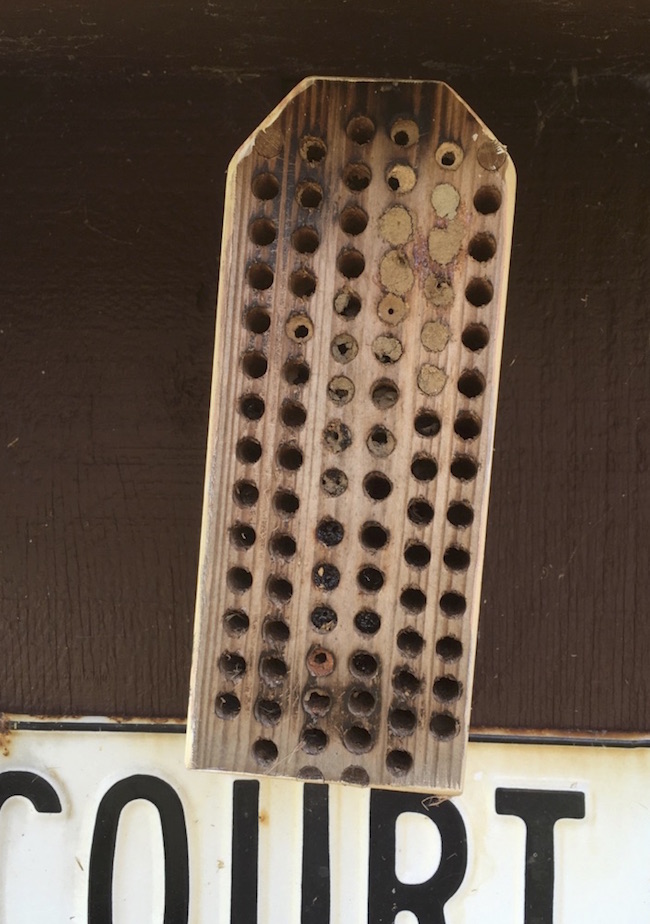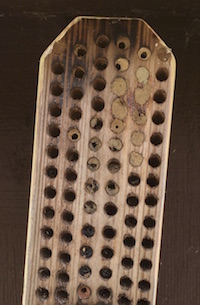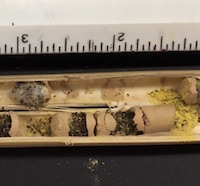When most people think about bees, honeybees and their hives of hexagonal, wax honeycombs come to mind. Unlike most bees, honeybees are social insects. Only 6 percent of bee species are social.
There are approximately 4,000 species of native bees in North America and 542 species live in Georgia. Native bees nest in the ground or in cavities, like hollow stems or bored holes in wood. According to the Xerces Society, only 250 female orchard mason bees are required to pollinate an acre of apples. This same task would typically require 15,000 to 20,000 forager honeybees.
There are many reasons why native bees are more effective pollinators than honeybees. Many native species of bumblebee and mason bee are more active in colder, wetter weather than honeybees. Unlike honeybees, many native bees perform buzz pollination — the female bee grabs a flower’s stamens and vibrates her flight muscles, which releases more pollen from the anthers, the stamen's pollen-producing structures. This behavior increases cross-pollination and even fruit size in crops. Honeybees, however, use nectar to pack pollen into their pollen baskets to carry back to the hive. This wets the pollen and makes it less viable for the next flower.
Adding native bee nesting sites to your garden is one of the easiest ways to increase pollinator numbers. The most common types of nests are drilled wood or bundles of hollow tubes, like straws or thin bamboo. Nests should be placed 3 to 8 feet off the ground and positioned facing south or east.
To build a nest, cut 6- to 8-inch pieces of bamboo, cardboard straw, or pieces of pithy or hollow-stemmed plants, like elderberry and blackberry. These tubes should have a back or stop, so things like straws should be placed in a wooden box. Bundles should contain between 15 and 25 straws or tubes and can be mounted to structures or trees. I have a few nests that fit into pieces of 4-inch polyvinyl chloride, or PVC, cut a few inches longer than the straws to protect the straws from rain.
To make a drilled wood nest, drill a 3- to 5-inch hole in untreated wood without going all the way through the wood. Then, drill a variety of hole diameters, from one-quarter of an inch to three-eighths of an inch, all approximately three-quarters of an inch apart. Holes that are smaller in diameter should be 3 to 4 inches deep, and holes more than one-fourth of an inch in diameter should be 4 to 5 inches deep.
The native bees that will fill these cavities will primarily be univoltine species, meaning that they produce a single generation each year. These bees typically live for four to six weeks, and they are entirely focused on reproducing, laying eggs and storing food for the next generation. Female bees will make individual cells in the cavities, where they will lay one egg and pack away little balls of pollen they collect on an average of two to 20 foraging flights. Once enough is food stored, they seal the cell with clay or grass and begin work on the next cell. It takes about 24 hours for these female bees to complete one cell.
One female native bee may produce 20 to 40 eggs in her life, which will typically fill two to five straws or cavities. These cavities will sit, sealed over, until environmental cues like temperature and humidity trigger the emergence of the next generation of adults.
I have kept native bee nests for three years and I have thoroughly enjoyed watching the tubes fill each spring. I think this is a great way for the average home gardener to enhance pollination and diversity in the landscape without investing time and money to learn the intricacies of keeping honeybees. The only thing I am missing is the honey.









